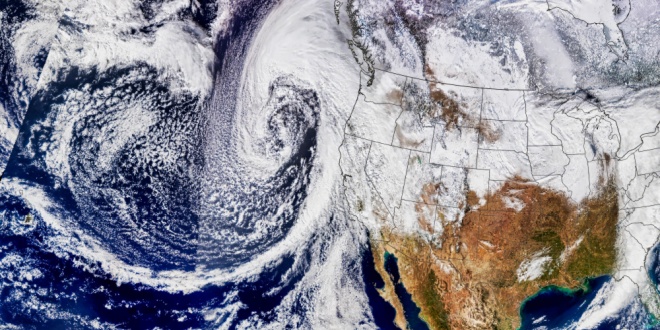Last week U.S. Senators Alex Padilla (D-Calif.) and Lisa Murkowski (R-Alaska) introduced the Improving Atmospheric River Forecasts Act, bipartisan legislation aimed at reducing flood risks and being better prepared for emergencies along the West Coast by improving atmospheric river forecasting.
Atmospheric rivers — often described as “rivers in the sky” that are hundreds of miles wide and can carry water vapor equivalent to multiple Mississippi Rivers — cause more than 80 percent of flood damage across the West. More than 50 atmospheric rivers made landfall across the West Coast from October 1, 2023 to September 30, 2024.
While there has been some research and progress in tracking these storms, it is believed that more can and should be done to better predict the timing and location of these storms.
“Atmospheric rivers are responsible for 30-50% of annual precipitation along the western U.S. and cause the majority of the flooding, with more than $1 billion in annual average flood damage in the western 11 states,” said Marty Ralph, Founding Director of the Center for Western Weather and Water Extremes at UC San Diego’s Scripps Institution of Oceanography. “The introduction of this act is critically important to advance forecasts of atmospheric rivers to enable more flexible and resilient water management, improved warning around flooding and overall improvements to public safety. It will also enhance the opportunities for reservoir operators to safely implement Forecast-Informed Reservoir Operations (FIRO) at more reservoirs to save additional water after a storm for the dry summer, or release it to mitigate flood risk if an AR storm is predicted in the next few days.”
Specifically, the Improving Atmospheric River Forecasts Act would direct NOAA to establish a standalone atmospheric river forecast improvement program that would:
- Develop accurate, effective, and actionable storm forecasts and warnings in collaboration with public and private partners across the weather forecasting sectors;
- Evaluate innovative observation tools and emerging technologies to improve atmospheric river analysis, modeling, forecasts, and warnings;
- Authorize NOAA to procure equipment, aircraft, and personnel contracts to fully monitor atmospheric river events each winter; and
- Improve atmospheric river hazard communication.
Previously, Padilla introduced the Atmospheric Rivers Reconnaissance, Observation and Warning (ARROW) Act to bolster West Coast atmospheric river forecasting, which was passed into law as part of the National Defense Authorization Act (NDAA) for Fiscal Year 2024.
Full text of the bill is available here.
 California Water News Daily Your Source For Water News in California
California Water News Daily Your Source For Water News in California


